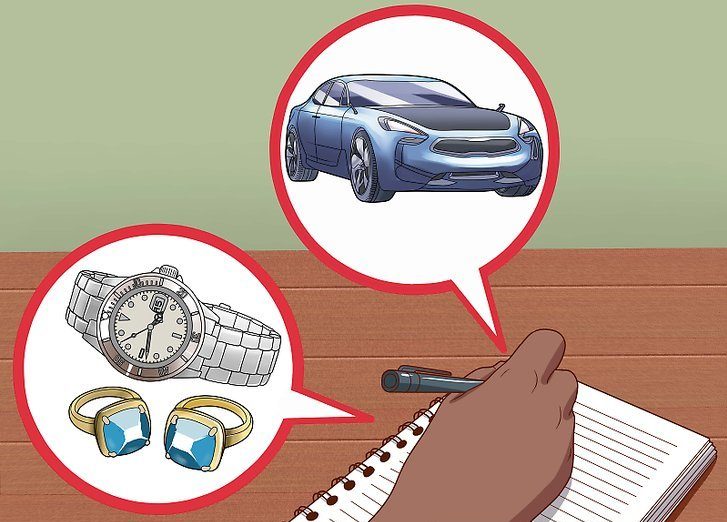

Alison Schultz, Mark Bou Mansour ■ Wiki: How to tax the superrich (with pictures)

The extreme wealth of the superrich is making our economies insecure and poorer than the sum of their parts.
Our economies were designed to let people earn the wealth they need to lead secure and comfortable lives, but our tax rules make it easier for the superrich to collect wealth than for the rest of us to earn it. This has let the superrich collect extreme wealth to the point where our economies are less productive, more households are having to go into debt and people are living shorter lives.
Wealth taxes are the best tool for putting an end to the two-tier tax treatment that puts people who collect wealth for a living (ie those who mainly live off of huge dividends and rent money they collect) above those who earn wealth for a living (ie those who mainly live off of income they earn from working). We need wealth taxes to make our economies secure and protect the earner way of life that has defined the modern era.
Countries can straightforwardly follow the example of Spain’s successful and modest wealth tax today to raise $2 trillion in tax from the world’s richest 0.5%.
Here’s our step-by-step guide on how to tax the superrich.
Steps

1. Set a high bar for wealth and only tax wealth that’s above the bar
Setting a high threshold – like the top 0.5% wealth – means any wealth a person owns below this threshold does not get taxed. This makes sure the wealth tax only applies to the superrich, and doesn’t negatively impacts the middle and lower classes. It also means the very wealthy individuals to whom the tax does apply would only pay tax on the upper crust of their wealth – that is, on the portion of their wealth above the 0.5% threshold. For example, in Switzerland, a 0.5% threshold stands at US$11 million. A wealth Swiss person would only be taxed on the wealth they own above US$11 million. Their first eleven millions would not be taxed. A high threshold makes the administration of wealth tax simple for governments and more politically feasible.
Step 1 image credit: wikiHow

2. Apply the tax to all types of wealth to prevent the superrich from cheating on tax
Exempting certain types of wealth from the tax creates an opportunity for the superrich to abuse. They can shift their assets into exempted categories to pay less tax. This shifting isn’t only bad economics — since wealth goes to where tax dues are lowest rather than where they’re most productive — it also complicates implementation, making a lot more costly work for tax authorities. By applying the wealth tax to all asset classes above the high threshold, governments can prevent inefficient investments and curb the wiggle room for tax abuse. If you’re a government and you’re concerned about the potential impact of applying the tax to business assets, don’t worry, we’ll explain how to handle this in step 6 below.
Step 2 image credit: wikiHow

3. Exercise robust transparency on owners of companies and assets, to tax the right amount
When governments apply income tax, they don’t rely alone on what people self-report. They use official records to verify how much a person earned and ought to be taxed. Otherwise, folks can underreport to underpay tax. Wealth taxes are no different. But the problem is the owners of companies and assets can cover the paper trails linking them to what they own. The best tool for exposing these paper trails are public registers on beneficial (ie true) owners. These registers provide detailed information on who truly owns and controls companies and assets, equipping governments with the official records they need to verify how much wealth a person has and how much tax they should pay.
Step 3 image credit: wikiHow

4. Strengthen transparency standards at the UN so that the superrich rich can’t hide wealth in tax havens
The strength of countries’ tax laws ultimately depends on our global tax transparency standards. The superrich’s ability to use secrecy jurisdictions — a type of tax haven that specialises in hiding finances from other countries’ laws — to hide their wealth from tax administrations can keep wealth taxes from being fully effective. To make wealth taxes truly effective, countries must make sure the UN tax convention currently being negotiated delivers robust tax transparency standards.
Step 4 image credit: wikiHow

5. Put in safety measures to make sure superrich individuals relocating to other countries still pay what they owe
Evidence shows that apply wealth tax to the superrich does not lead to the superrich fleeing the country in droves, despite media headlines claiming the contrary. Just 0.01% of the richest households relocated after wealth tax reforms targeting them were implemented in Norway, Sweden and Denmark. But just to be safe, governments can put in place measures to make sure a long-time resident superrich individual still pays the wealth tax they owe even if they move abroad. For example, governments can introduce a tax obligation on former residents for a specified period after they move abroad, or implement exit taxes on individuals who renounce their residency. It’s worth noting that if other countries also introduce wealth taxes, there’d be little point to relocate to somewhere else.
Step 5 image credit: wikiHow

6. Provide business owners some flexibility so they don’t have to liquidate their business to pay their taxes
Concerns that business owners might need to sell parts of their companies to pay their wealth taxes can be addressed by providing alternative options for paying. For example, business owners who are unable to pay their tax dues in cash by the end of the year and cannot easily generate liquidity from their businesses — unlike publicly traded companies that can sell shares — could transfer some a fraction of their business’s shares, equivalent to the tax duty, to a government-managed “wealth tax trust”. This approach has been successfully used for taxing inherited artwork. The government would own that part of the business, with rights to receive their share of profits but without any control over how the business is run. And the business owner would have the option to buy back these shares within a specified period at the same price. If the owner decides not to buy them back, the trust would sell the shares to the market after a set period. This approach protects businesses from being squeezed by the wealth tax while making sure their owners pay the tax they owe.
Step 6 image credit: wikiHow

7. Call out all myths used to scare the public off of wealth taxes
There are a lot of common misconceptions about wealth taxes: they drive the superrich away, they unfairly target the middle class, they harm the economy. None of these are true: the superrich stay where they are, wealth taxes only apply to the very richest, they boost economic productivity and investment. What rarely gets talked about is the two-tier tax treatment of wealth. Collected wealth – ie dividends, capital gains and rent gained from owning things – is typically taxed at far lower rates than earned wealth – ie salaries gained by working. At the same time, collected wealth typically grows faster than earned wealth. This has resulted in the wealth of the superrich – whose wealth is virtually all collected rather than earned – quadrupling since the 1980s. Wealth taxes put an end to this two-tier treatment, making our economies more secure and protecting the earner way of life our economies are based on. Governments should call out myths on wealth taxes with clear and factual information on how they would implement wealth tax reforms, who these would apply affect and the benefits to be gained.
Step 7 image credit: wikiHow
Related articles

The tax justice stories that defined 2025

The best of times, the worst of times (please give generously!)

Let’s make Elon Musk the world’s richest man this Christmas!

Admin Data for Tax Justice: A New Global Initiative Advancing the Use of Administrative Data for Tax Research

2025: The year tax justice became part of the world’s problem-solving infrastructure

Bled dry: The gendered impact of tax abuse, illicit financial flows and debt in Africa
Bled Dry: How tax abuse, illicit financial flows and debt affect women and girls in Africa
9 December 2025

Two negotiations, one crisis: COP30 and the UN tax convention must finally speak to each other

‘Illicit financial flows as a definition is the elephant in the room’ — India at the UN tax negotiations


